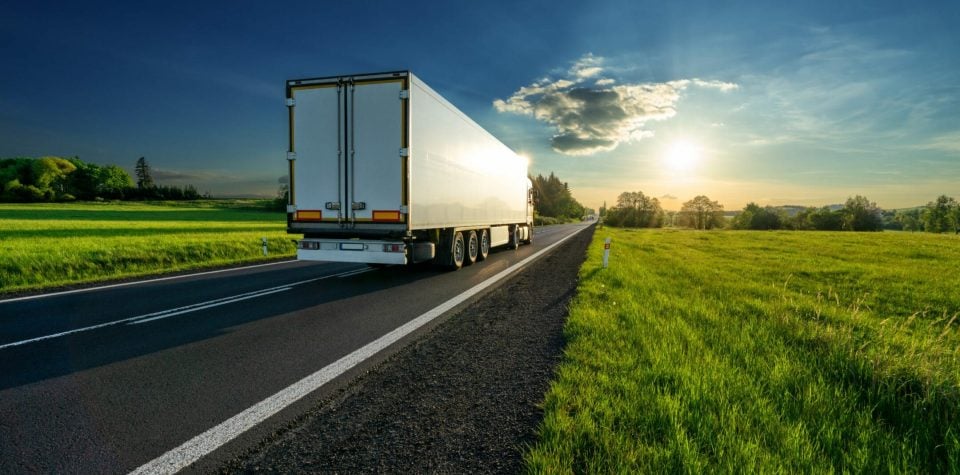Lessons from a pandemic and the race to net zero
The transport and logistics industry has seen both immense growth and unsettling change. In this article we’re taking a look at three of the major logistics trends going into 2022.
Maersk joins the race to net zero (but hits a surprising hurdle)
The world’s largest container shipping line and vessel operator, Maersk, has joined the race to reach net zero by 2050. Part of this means using biofuel to power some of their 700-strong fleet.
The trouble is that people aren’t eating enough french fries, according to Maersk CEO Soren Skou. The biofuel that Maersk sources is used cooking oil. “We can’t keep scaling it. If our growth rates continue, we will run out of oil in one or two years.”
Across the globe, almost one fifth of goods are transported by Maersk, and the shipping industry as a whole is responsible for about 2% of the world’s CO2 emissions. Maersk now uses biofuel in some vessels for clients who also want to cut their emissions, like H&M.
Skou said that demand for greener shipping is rising exponentially, and prices for used cooking oil in Europe are higher because of the surging demand. Biofuel plays an important role in Maersk’s path to net zero, but future plans involve low-emission ships that run on green methanol.
In a world first, Maersk has ordered a container ship that doesn’t emit carbon. It’s due for delivery in mid-2023. Dual-engine technology enables it to sail on either green methanol or traditional very low-sulfur fuel oil. Speaking on Bloomberg TV, Skou said there would be more ships on order before the end of the year.
He also called for a global effort to increase production capacity of green methanol. “So the ship technology is not the limiting factor, but the availability of the green fuels is. It’s a new global energy system that needs to be built and that’s a massive challenge.”
When you realise that Maersk currently consumes about 12 million tons of marine oil every year, which is roughly equal to all the oil produced in the world in one day. It’s easy to see why availability and capacity is such an important consideration. The shipping industry uses a lot of fuel.
But Maersk’s commitment to lowering emissions should be seen as a sign of the changing tides in the global shipping industry. For all involved in the Australian industry, it’s time to climb aboard and get ready to set sail.
Source: Bloomberg News
Contactless is the new standard trend
Long after the chaos of Covid-19 has peaked, contactless deliveries are set to be the new standard.
A Consumer Brands Association task force is overseeing 12 pilot programs to develop industry standards for shippers, carriers, 3PL’s, and retailers to execute contactless freight pickup-and-delivery workflows. Pilot program participants include companies such as Coca-Cola, Procter & Gamble, Target, The Home Depot, and Werner Enterprises.
The results of the programs are being used to create an industry guide to contactless pickup and delivery. But that wasn’t the only focus of the programs.
The effect of digitisation on increased safety and reduced time was also looked at carefully. And the results were impressive. Participants saw dwell times for drivers drop from 66 to 23 minutes when they shifted from paper bills of lading to digital records.
It’s clear that paperless and contactless management software has a powerful impact on the safety and efficiency of transport operations. Results also showed that companies that have already made the shift to using management software are seeing strong results.
While still in draft form, the guide outlines workflows for contactless shipments. A generated dynamic QR codes, digital documentation and electronic signatures all feature.
The key takeaway? Pandemic or not, 2022 will see contactless deliveries increasingly in demand.
Last-mile delivery boom is here to stay trend
Kearney has released their 32nd Annual State of Logistics report and a key finding is that the last-mile delivery boom isn’t set to slow down any time soon.
Despite massive disruptions in global supply chains, demand for last-mile deliveries coming from stay-at-home buyers is still surging. We’ve all felt it. 2020 and 2021 have been a wild ride in the transport industry.
Kearney found that the upheaval of a pandemic and immense network disruptions destroyed long-nurtured efficiencies and created unexpected bottlenecks. Logistics managers were forced to take risks and find new ways to optimise for that transport gold: efficiency.
While manufacturing and hospitality industries suffered, home furnishings and consumer goods have been on the rise. The move to online consumption is expected to stay.
So while the world embraces eCommerce, shippers must find ways to meet last-mile delivery expectations while also managing costs and delivery quality.
Kearney also found that freight forwarders and 3PLs provide us all with the networks and scale to enable resilience in turbulent times. What do shippers most want, according to Kearney? End-to-end visibility across the supply chain. This will require widespread investment in digitisation and analytics.
It’s clear that while buyers demand contactless and same-day deliveries, the intense focus on and overhaul of last-mile delivery is here to stay.
Over to you
Have you noticed these logistics trends in your own business? How do you see things changing? Let us know in the comments. Take a look at Transvirtual’s free trial to see what we can do for your business today.



